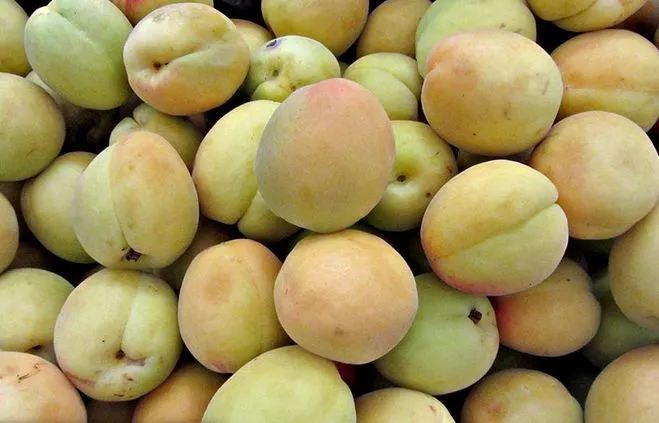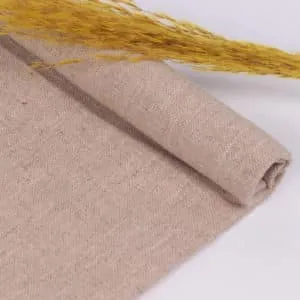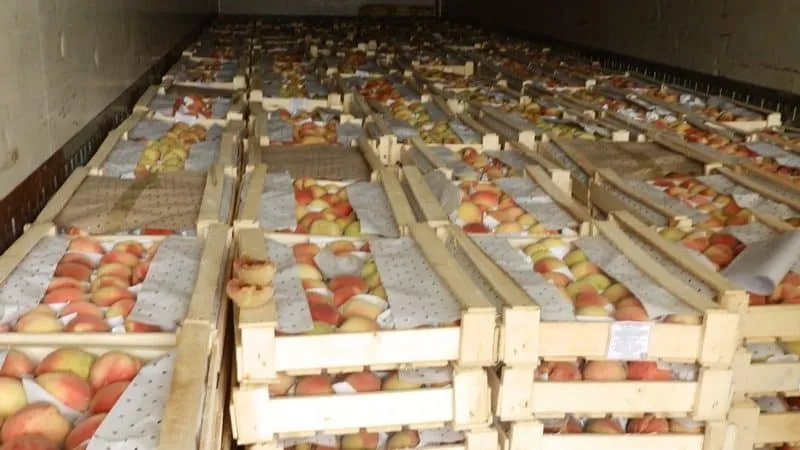Peaches are incredibly fragrant and delicious fruits, which is why in summer they fill not only market and shop stalls but also orchards across Europe. It often happens that a fruit looks ready to eat — glowing with red-yellow hues and covered in velvety skin — yet inside, it remains unripe: the flesh is hard, lacking distinct aroma and flavour. In this article, we answer the questions of what to do with firm peaches and whether tree-picked fruits can ripen at home.
Table of contents
Can Tree-Picked Peaches Ripen at Home?

If a peach looks ripe on the outside but is still hard inside, it can be left at home to speed up ripening. The same applies to green fruits.
These could be homegrown peaches or store-bought ones. The key is knowing simple methods to turn an unripe peach into a juicy and sweet treat. The most common techniques involve using a paper bag or a natural linen cloth.
Important! Any fruit will only ripen at room temperature.
How to Ripen Peaches at Home
Delicious, sweet peaches are a quintessential summer fruit. They can be eaten fresh or used to make jams and compotes.
If the fruits are not yet ripe or still green, the following ripening methods are recommended.
Green Peaches in a Paper Bag
A popular ripening method is placing the fruits in a paper bag. Kraft gift or packaging bags work perfectly for this. The paper allows the fruit to naturally release ethylene gas while retaining moisture.
If a plastic bag is used, the peach may rot quickly. Leave the fruit in the paper bag for 24 hours in a dry, warm place. Check them during this time — if they emit a pleasant aroma and soften, they are ready to eat.
Note! If after 24 hours the peaches are still firm, leave them for another 12-15 hours, checking regularly for ripeness. Once ripened, the fruits retain their taste and quality for another 2-3 days.
Ripening with a Linen Cloth

To ripen green peaches, a linen cloth can be used. Place the fruits in the center, stem-side down, ensuring they do not touch each other. Cover them with another linen cloth, leaving no gaps.
Leave the peaches in a warm, dry place for 2-3 days, checking daily for ripeness. This can be determined by their aroma and firmness. Some can be eaten immediately, while others can be refrigerated for longer storage.
How to Check Ripeness and Store Properly
A ripe peach should be soft yet firm, moderately fragrant, and velvety. Overripe fruit will feel too soft and smell overly sweet. The skin should be free of green or brown spots, black dots, or other blemishes.
Note! If the pit is dry or cracked, the fruit may have been treated with chemicals or growth stimulants.
For long-term storage, keep peaches in the fridge or a dry cellar. In the latter case, place them in a wooden crate and cover with newspaper or a clean cotton cloth. Do not wash them beforehand — the natural bloom helps preserve them longer.
Check regularly for spoilage. If soft spots appear, use the fruit immediately for cooking. Peaches make excellent jams, preserves, jellies, or compotes.
At room temperature, peaches last no more than 2-3 days. Use paper bags for storage — plastic is unsuitable. Humidity should not exceed 85%, or the fruits may spoil quickly. The ideal temperature is 0°C.

Conclusion
There are several simple and effective ways to handle unripe peaches. Some prefer paper bags in a warm, dry place, while others use linen cloths and store them at 0°C for 2-3 days.
Ripe peaches should be firm yet yielding, with a pleasant aroma and velvety skin. Avoid fruits with green or black spots. These methods also work for nectarines, apricots, and apples.







